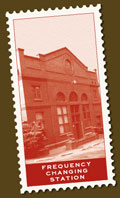EAST CENTRAL

The area currently known as the East Central Neighborhood was in a natural state as late as 1880. The area was covered with pine trees and wild grasses. Native Americans used the area, along with the rest of what is now present-day Spokane, for hunting and gathering of food. Southeast Boulevard, at this time was no more than a foot trail occasionally used by horses and wagons. Until 1910, Southeast Boulevard was called Old Country Road. The Great Northern Railroad arrived in Spokane in 1881. The completion of this railroad was a catalyst for industries in Spokane and along the rail line.
The area bordered by 3rd Avenue on the south, E. Sprague Avenue on the north, Perry Street on the west and Napa Street on the east was colloquially known as Union Park during this time. Residents of this area were typically immigrants. Many came from Ireland, Italy and Scandinavia. Their associations with various milling industries is said to be the reason the area was known as Union Park. This was a working class area and was one of many additions developed for Spokane’s artisans and day laborers.
- 1: Albert Apartments/Kensington Court
- 2: Schade Brewery/Schade Tower
- 3: Carnegie Library East
- 4: Klein House
- 5:John & Sonora Dodd House
- 6: John & Ida Strack House
- 7: Hart House/Collins House
- 8: Frequency Changing Station
- 9: Hoxsey Block
- 10: Cambren Dutch Windmill
- 11: Liberty Park Methodist Church
- 12: Joseph & Mazie Albi House
- 13: Dyar-Kiesling House
- 14: Ross Place/Mary’s Restaurant